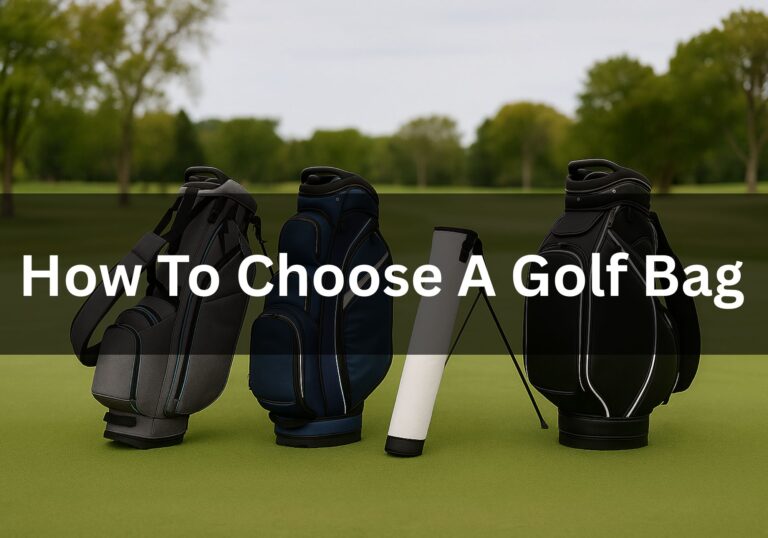What Kind of Golf Bag Should You Carry?
Picking out a golf bag seems simple until you’re staring at rows of stand bags, cart bags, tour bags and hybrid options wondering what actually matters. If you’ve ever fumbled with tangled straps, battled a bag that didn’t quite fit your push cart, or questioned why some bags cost more than your driver, this guide is for you.
We’re here to break it all down, without the jargon, so you can find a bag that fits your game, your style, and your needs. Whether you walk, ride, or mix it up, there’s a perfect setup for you.
The Main Types of Golf Bags
Let’s start with the basics. There are five main categories of golf bags, each designed for a specific kind of golfer or playing style.
1. Stand Bags
Best for: Walkers or golfers who ride occasionally
Key features: Lightweight, dual straps, built-in legs for standing upright
Pros: Easy to carry, compact, versatile
Cons: Smaller storage capacity than cart or tour bags
These are the most popular bags for recreational players who like walking 9 or 18 but also ride from time to time. Look for bags under 5 pounds with comfortable shoulder padding and well-balanced weight distribution.
2. Cart Bags
Best for: Golfers who mostly ride or use a push cart
Key features: No stand legs, designed to sit securely on carts, more storage
Pros: Tons of pockets, large apparel compartments, easy access
Cons: Not great for carrying; heavier and bulkier
Cart bags tend to have a 14-way top for full-length club organization, large insulated cooler pockets, and better protection for your gear. Just know that they aren’t ideal for carrying even short distances.
3. Hybrid Bags
Best for: Players who alternate between walking and riding
Key features: Combines stand and cart bag benefits
Pros: Versatile, more storage than a stand bag, still carry-friendly
Cons: Heavier than true carry bags, can be bulky on your back
Think of this as the Swiss Army knife of golf bags. A hybrid bag gives you the flexibility to walk comfortably but also enough space and structure to sit well on a cart or push cart.
4. Sunday Bags / Pencil Bags
Best for: Casual rounds, practice sessions, travel
Key features: Ultra-lightweight, minimal storage, often no stand
Pros: Simple, light, perfect for carrying just a few clubs
Cons: Limited protection and pocket space
If you like to hit the local par-3 or walk a quick 9 with a half set, a Sunday bag is a perfect low-key option.
5. Tour Bags
Best for: Competitive players, range rats, or those who love that tour look
Key features: Large, heavy, tons of space and branding
Pros: Maximum storage, premium materials, lots of presence
Cons: Heavy, expensive, impractical for walking
Tour bags look amazing, but unless you have someone else carrying them (hello, caddie), they’re best left on a cart or used as a range or show bag.
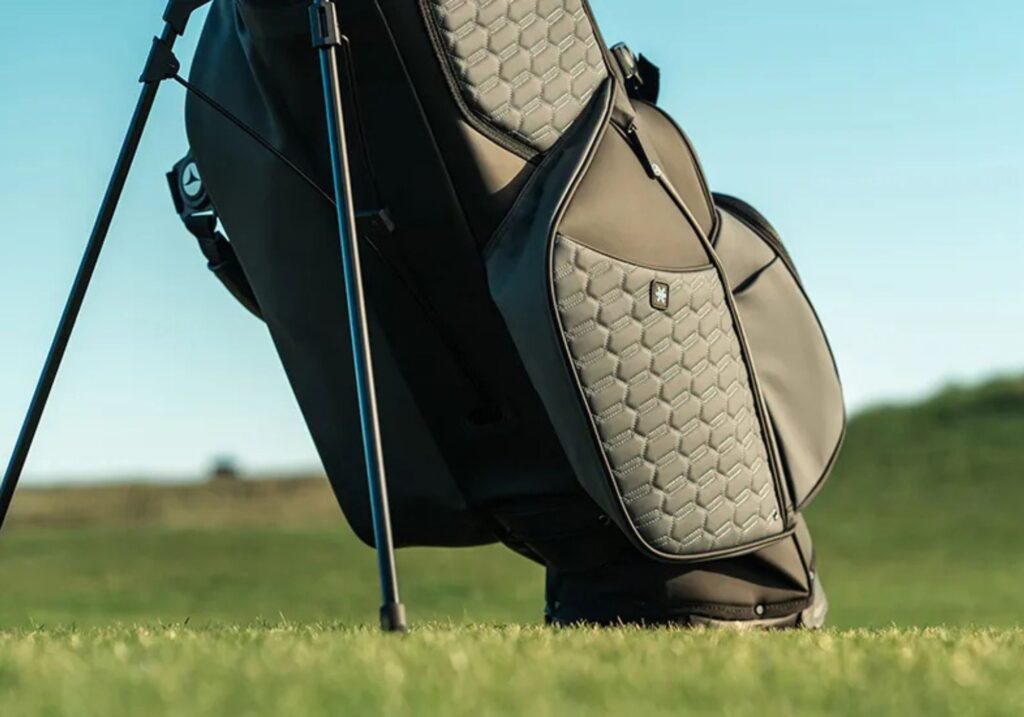
What Makes Some Bags More Expensive?
It’s not just about logos or brand recognition. Here’s where the price tag starts to climb:
- Materials: Higher-end bags use more durable fabrics, waterproof zippers, and premium padding
- Weight: Lighter without sacrificing strength means better tech and engineering
- Features: Magnetic pockets, hidden compartments, and strap systems that actually work
- Build Quality: Better stitching, reinforced handles, and smoother zippers make a real difference over time
A $150 bag might last a few seasons or longer. A $500 one, properly cared for, could easily last five-plus years and handle every kind of round you play.
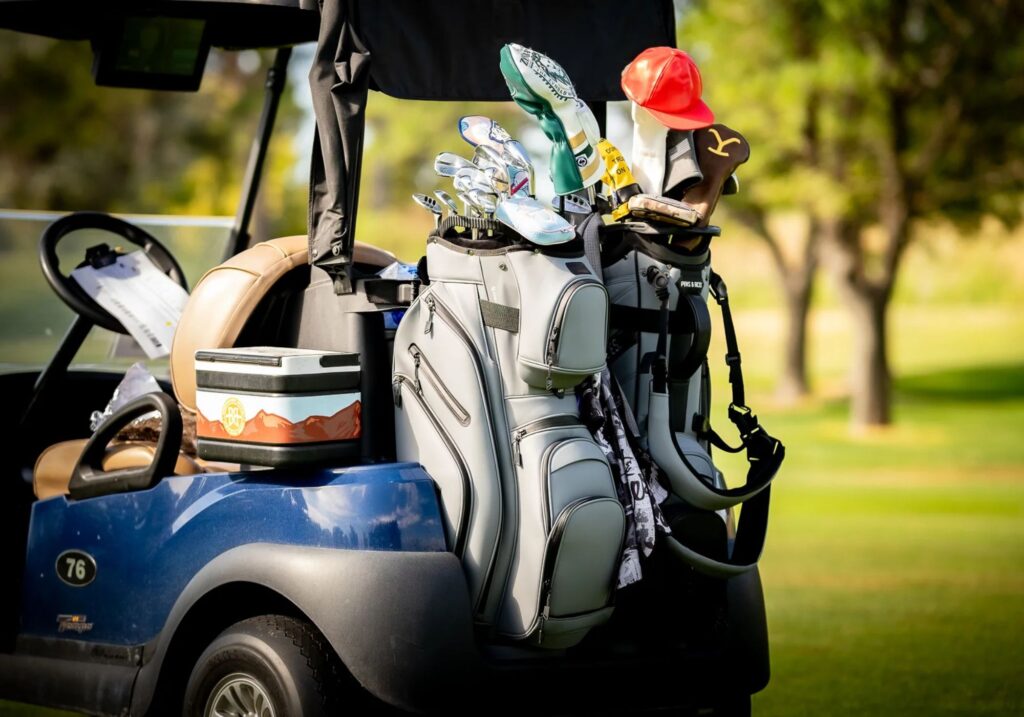
Key Features to Look For
You don’t need every bell and whistle, but certain features can really improve your day-to-day experience on the course.
Strap System
If you’re walking, this matters more than anything else. Look for:
- Dual Strap Designs: These balance the weight of the bag across both shoulders, similar to a backpack. Comfort is key, so test how it feels when loaded with clubs.
- Adjustable Lengths: Make sure the straps can be dialed in to match your torso size and walking posture.
- Padding Quality: Thin foam or stiff straps can dig into your shoulders. Go for wide, breathable straps with soft, dense foam.
- Quick Detach or Swivel Points: Premium bags often include clips or rotating connection points that help the bag move naturally with your stride.
Cart Compatibility
Even if you don’t ride often, most golfers will use a push cart or borrow a power cart occasionally. You want a bag that fits securely and doesn’t twist or shift. Look for:
- Cart Strap Pass-Throughs: These allow the cart strap to secure the bag without covering up important pockets.
- Rubberized or Non-Slip Bases: Prevents the bag from sliding around on push or riding carts.
- Leg Locks or Stable Stands: Helps stand bags sit properly on carts without splaying out or getting unstable.
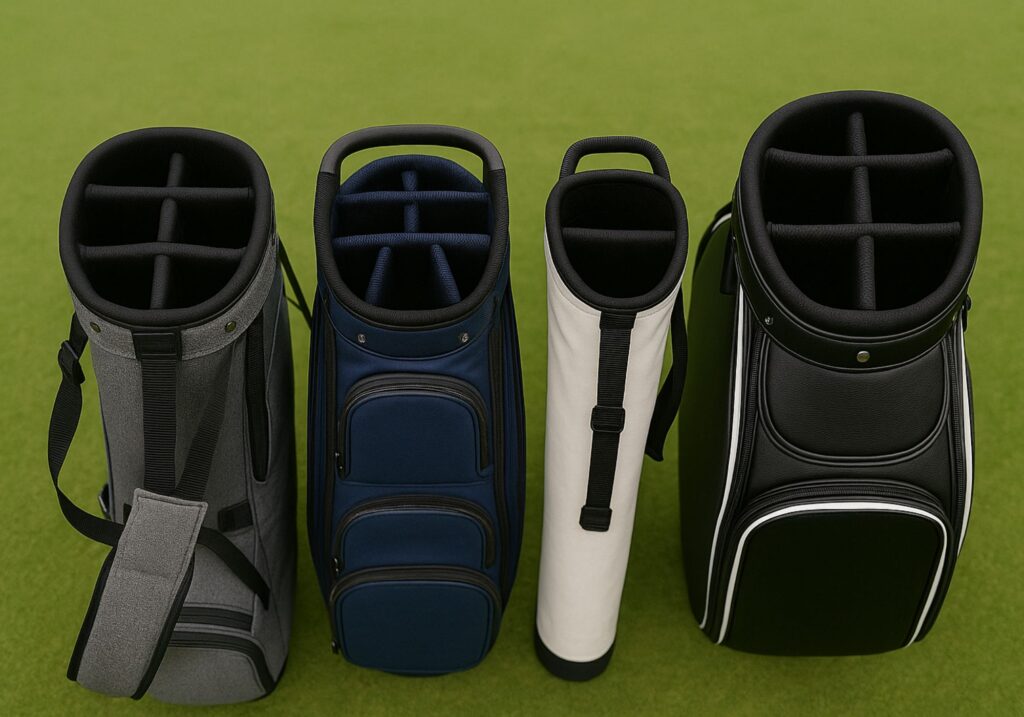
Dividers
Dividers help organize your clubs and protect shafts and grips. Here’s what to know:
- Top Size: Bags range from 4-way to 15-way tops. Fewer dividers are simpler and lighter, while more dividers help with club tangle and wear, but add weight.
- Full-Length Dividers: Not all bags with 14 slots have full-length dividers. If you care about shaft protection and easy access, go for full-length every time.
- Putter Well: Most bags include an oversized putter slot to accommodate larger grips.
Storage
More pockets don’t always mean better functionality. Pay attention to:
- Apparel Pockets: Should be roomy enough for a jacket or extra layers without crushing everything else.
- Cooler Pocket: A great add-on for keeping drinks cold, especially during long summer rounds.
- Valuables Pocket: Lined with fleece or velour to protect your phone, wallet, or watch.
- Rangefinder or GPS Pocket: Often magnetic or front-facing for quick access.
- Ball Pocket: Should be easy to reach and large enough for more than just a sleeve or two.
Durability
A golf bag is something you’ll use hundreds of times. Make sure it holds up.
- Base Construction: A sturdy, reinforced base helps the bag stand upright and survive the trunk or travel wear and tear.
- Fabric Type: Premium bags often use ballistic nylon or waterproof polyester, which resists tears and fading.
- Zippers: Look for durable zippers that don’t snag or pop open. Waterproof zippers are great for rainy rounds.
- Stand Mechanism: If you’re buying a stand or hybrid bag, test the leg action. Cheap bags can feel clunky or tip over easily.
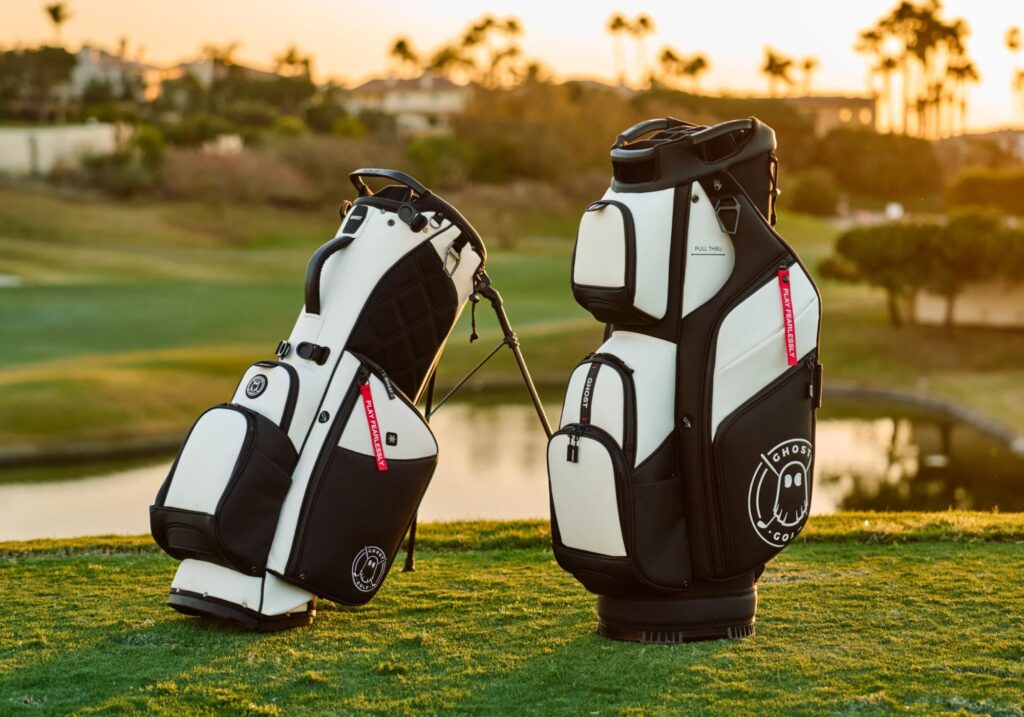
What’s the Right Bag for You?
Here’s a quick way to size it up:
| Golfer Type | Recommended Bag Type |
|---|---|
| Walks often | Lightweight Stand or Sunday Bag |
| Rides often | Cart or Tour Bag |
| Mixes it up | Hybrid Bag |
| Push cart user | Cart or Hybrid Bag |
| Minimalist | Sunday or Pencil Bag |
| Gear-heavy | Cart or Tour Bag |
Final Thoughts: Don’t Overthink It
There’s no perfect bag, only the one that fits how you like to play. If you’re walking more this season, a lighter, well-balanced stand bag might totally change your comfort level. If you’re finally tired of cramming everything into tight pockets, it could be time for a hybrid or cart bag.
And don’t forget: style matters, too. Your golf bag says a lot about your personality on the course. Choose one that feels like you, and you’ll enjoy every round a little more.
What’s In Your Bag?
Have a favorite golf bag? Just made a switch and love it? Let us know in the comments. We want to hear what works for your game.
